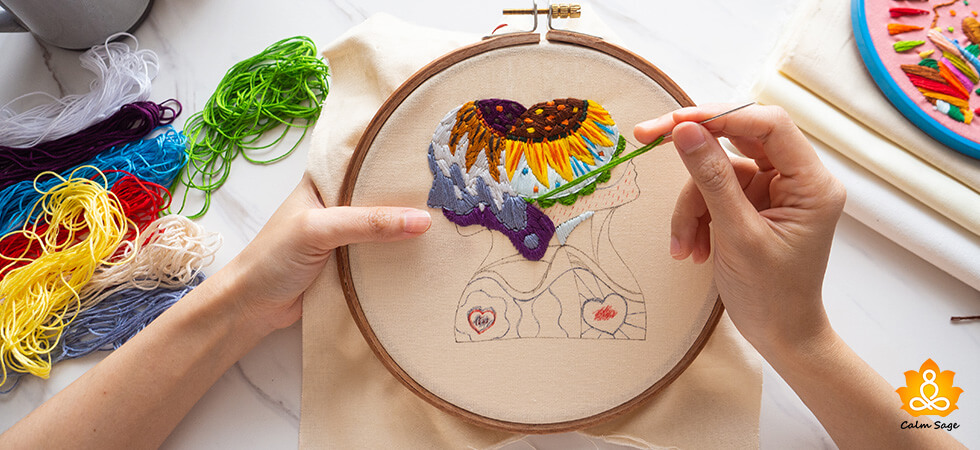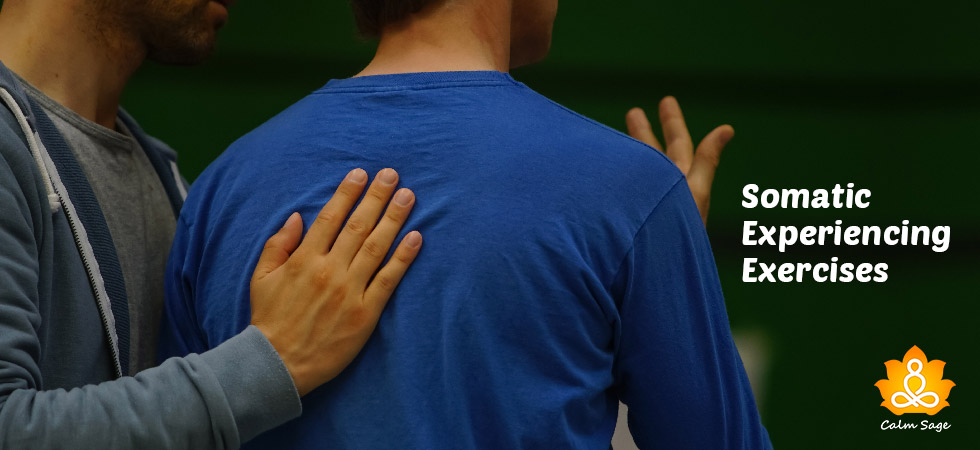Grief Art Therapy: Can Artistic Expression Help Cope With Grief And Loss?

Grief is something that no one wants to deal with, even in their worst times. Grief is a personal experience and can be intimately unique to everyone. What brings you a semblance of peace in times of mourning might not be the right experience for someone else? The support you might need might also depend on your source of grief and coping skills.
Here I’m talking about grief art therapy. Creating something artistic can be healing for many but at the same time, can be restricting for some people. Processing a loss is very difficult and different for everyone. You may or may not find artistic expression as freeing as you might need. A therapist specializing in art therapy can help you understand if you need it or not.
Coping with Grief Can be Overwhelming
Get Matched With the Therapist
Mourning and grieving a loss – any kind of loss – can manifest in many ways. However, the stages of grief remain the same. No one can truly be free of grief, especially when it comes to children or people with low coping skills. Not everyone has the same level of processing the raw and strong emotions that grief brings as many adults do.
While talk therapy is one of the best ways to cope and heal from grief and loss, it’s not the only way. Just like people have different responses to talk therapy, they can have the same with grief therapy. The best part is that many ways of therapy can help you heal from grief and loss.
One of those ways is art therapy for grief. Let’s take a closer look at how art therapy for grief can help heal and cope with grief.
Grief Art Therapy: How To Use It?
When grief comes, it comes with full force and can leave you reeling. Mostly, grief is accompanied by depressive symptoms including anhedonia or loss of interest in things you previously loved. If you’re struggling with grief and would like to try an artistic therapeutic approach, then I’d recommend you try something you used to enjoy before your loss.
For example, when I was grieving the loss of my grandparents, I found myself shutting down emotionally. Music, in my case, had always been a constant therapeutic support and during my coping with grief, I found myself leaning towards music to soothe my heartache.
You can consider other forms of emotional release such as knitting, journaling, dancing, pottery, sculpting, and many more.
The artistic expression might bring a sense of relief from the painful emotions of grief but they are not a permanent solution.
It is recommended that you seek grief counseling if your grief is too large to contain. Unaddressed grief can impact all aspects of life and can make it harder for you to focus on your everyday life.
Here are some bereavement art therapy activities you might find helpful in coping with grief and loss:
Grief Art Therapy Activities
1. Visual Arts
Visual arts can be cathartic and can present as a memorial for your loved one. Creating something visual can be a good form of expression for your lost one and yourself. It allows you to express your emotions freely and can also serve as a physical reminder of your lost one.
Here are some art therapy activities you can consider for grief:
A Photo Collage: You can create a scrapbook of your lost ones’ pictures and visuals or you can create a photo collage for them by dedicating a space on a wall in your home.
Painting: You can paint something that is significant to your lost one and yourself either on a sheet, canvas, or wall.
Mandala Art: Creating mandala art gives you the freedom to express your tumultuous emotions the way they want to come out. Or you can cut out a mandala and color it to express yourself.
Decorating: You can also decorate an object and dedicate the art to your loved one by giving it a space in your home or donating it.
Tattoo: While many may disagree, creating tattoo art and getting inked can also be a form of visual art expression. This way you can dedicate a permanent space to your lost one on your body.
Knitting: Yes, knitting can be a visual art expression as well. You can make a quilt or a blanket out of your loved one’s clothing. This way, you’ll always have them by your side.
2. Performing Arts
Performing arts is another way to express your grief and the emotions that often follow it. Music and dance are two of the most common forms of performing art and can be easily achieved too.
Here are some performing art therapy activities for grief and loss:
Recording Music: You can always create and record a piece of music or video playlist for your lost one. Keep in mind what they liked to listen to and create one for them.
Dancing: Pick out the songs of your lost loved one and dance to the tunes. Lose yourself in the memories as you connect with the song and movement.
Playing Music: You can always play the music your lost one loved to listen to. Plus, no one’s stopping you from dancing to the same.
Make a Video: You can also create a video composed of your loved one’s memories with soft and soothing music in the background.
3. Creative Arts
Creative arts can include writing and journaling. These forms of creative expression can help you cope with your emotions differently than the other forms of art therapy. You can write down your unfiltered thoughts and feelings on paper and then you can pay your respects to your lost one in many ways.
Here are some activities for grief and loss that you can try:
Write Your Thoughts: The best way to deal with the emotions brought on by grief is to write whatever you’re thinking and feeling in a diary. Don’t worry or focus too much on grammar and spelling, just pour out your heart.
Remember Them: You can also commemorate your lost ones either by writing about their life story, something they’ve said, or other memories you can recall.
Writing A Letter: You can also write a letter to your lost one and then depending on your circumstances, you can either set it on fire (a metaphorical representation of letting go) or keep a diary of your letters.
Journal: You can also opt to use journal prompts to write about your grief and how it makes you feel. You can find some journal prompts to start here.
How Does Grief Art Therapy Help?
While there are no comprehensive studies on the benefits of grief art therapy, there are some instances that help us understand how art therapy can be effective in healing especially in children. Children are most vulnerable to raw emotions and don’t always know how to express them.
Art therapy, a type of psychotherapy, employs creative activities such as painting, drawing, dancing, clay modeling, and others that appeal to children to help them express their grief and process the loss and trauma.
In a 2018 study, it was found that grief art therapy, especially visual arts, helped adults develop strong coping skills to cope with their grief. Visual arts can involve creating photo books, drawings, paintings, sculpting, etc.
However, when they talked about relieving the pain of grief, no significant benefits were found in using visual art activities. However, art therapy did help and an improvement was seen in the overall well-being of the participants.
Art therapy can also help manage symptoms of anxiety, depression, and stress that often follow symptoms of grief. Art therapy can also help take your mind off of grief and focus on happy memories and recollections.
Creative art therapy activities for grief and loss have been found beneficial in dealing with trauma-related grief, especially in children and teenagers. This artistic expression can involve writing, story-telling, commemorating, drawing, and others.
What Next?
While it is advised to seek professional help when struggling with grief and loss, there are times when you don’t (or can’t) seek grief counseling. Even in those times, art therapy can prove to be a healing experience albeit a temporary one.
Get Matched With the Therapist
Grief art therapy is a mindfulness activity where you’re required to keep your attention on the process alone. In a study, it was found that mindfulness can help control your emotions and deal with worrisome thoughts. This activity can also help you manage emotions such as anger, sadness, depression, and anxiety that often come with grief.
If you’re trying grief art therapy on your own, then it is recommended you begin with journaling or writing about your grief and loss. This may also help keep the intrusive thoughts away and calm down your racing mind. Many pieces of research over the years have proven the benefits of journaling and have linked it to emotional release and processing.
Music creative activities can also support young adults in processing their grief and loss. Even tattoos to memorize your lost loved one can help in emotional processing and can serve as a visual portrayal of your lost one.
Final Words for Grief Art Therapy
The artistic expression of grief and loss might be helpful for many people but it might not prove as helpful to others who are grieving. Grief is a unique and personal experience that can make you feel raw and strong emotions. Sometimes, those emotions can’t be processed by just talking about them.
Grief art therapy can act as a freeform expression and can also help you process your strong emotions under the guidance of a professional therapist. Sometimes, we need a platform or a blank canvas to truly express what we are feeling.
If your grief is holding you back from living your life to the fullest, then you should consider talking to a grief counselor for support.
I hope this article helps you understand how grief art therapy can help cope with grief and loss. For more, you can write to us at info@calmsage.com or DM us on social media. You can also share your thoughts in the comments below.
Take Care!




















